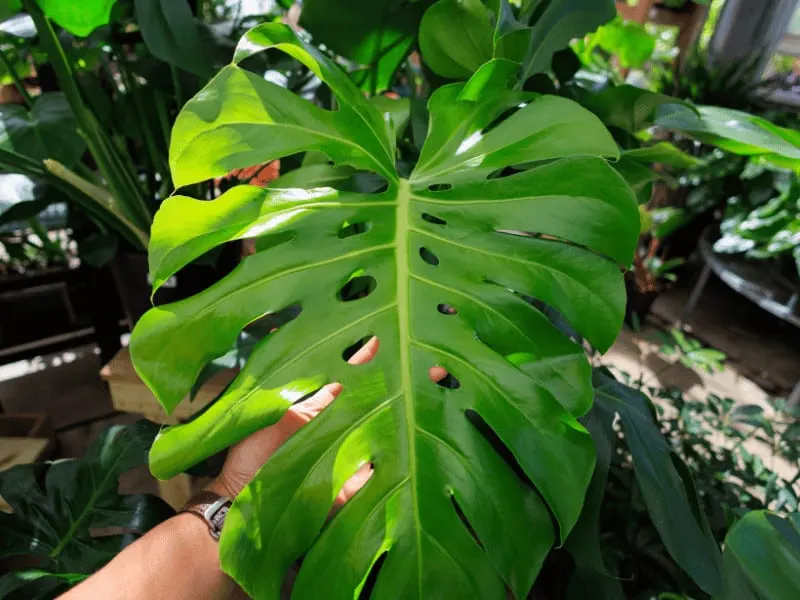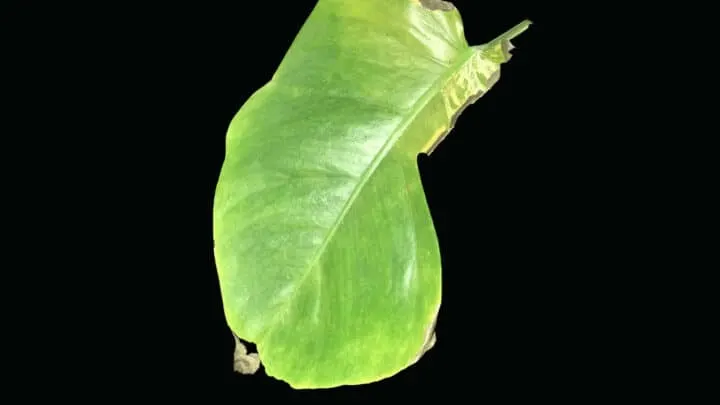Why does my Monstera deliciosa get brown spots on its leaves? The holey or split foliage is the most popular feature of Monstera Deliciosa. Monstera Deliciosa is a prominent member of the Arum family. It is native to the American tropical forests.
Table of Contents
Why Does My Monstera Deliciosa Have Brown Spots?
The brown spots indicate a problem with the amount of water your plant gets. If the marks are dark brown, it could be suffering from over-watering. On the contrary, light brown specks on crunchy leaves signify that your Monstera Deliciosa is dehydrated. Too much sunlight and heat can also cause the leaves to scorch. Besides, pest infestation or pathogen attacks also trigger brown spots on Monstera Deliciosa.

When you understand the general needs of Monstera Deliciosa, identifying the problems becomes more effortless. So, here are some of the requirements that a healthy Monstera has.
How to Grow an Ideal Monstera Deliciosa?
Monstera Deliciosa plants are easy to care for. Many people consider Monsteras as low-maintenance plants. They have a quick growth rate. If you get a young Monstera plant, it can grow an impressive size within the first six months.
These plants like drinking water, but too much water can be problematic. I’ve found that watering them once every week suffices. They also thrive in shaded areas where there is indirect sunlight. It is especially true for the leaves. Sunlight keeps them glossy and evergreen.
In short, Monstera Deliciosas have moderate needs. They bloom happily with occasional watering, indirect light, and average humidity. First-timers can also grow healthy Monsteras with little effort.
What Problems Can a Monstera Deliciosa Face?
Monstera Deliciosas have low water, humidity, and light needs, but they require these factors consistently. It means that slight negligence can cause many potential problems.
It is best always to be careful to prevent such major problems:
Wilting of Leaves
Monstera’s leaves are its best feature; unfortunately, they can suffer from problems. You may notice that the leaves have started to droop and wilt.
It is a common occurrence when the plant’s soil lacks enough moisture. It can also happen when you place your Monstera deliciosa under direct sunlight for too long.
Brown Spots on Leaves
As stated earlier, brown leaves indicate that your Monstera Deliciosa is unhealthy. The spots can appear if you place the plant in harsh conditions, like extreme weather.
Inadequate sunlight or too much water can cause the leaves to develop dark blotches. You may notice brown scale on your plant after a pest infestation.

Different Forms of Brown Spots on Monstera deliciosa
It has been observed that brown spots on Monstera Deliciosa can significantly differ in appearance. Some plants may grow brown spots that look like lesions. Others can have yellow rings circling their brown marks.
If you examine the leaves closely, you will realize that your Monstera Deliciosa has one of the following spots.
Large-Sized Spots
Your Monstera Deliciosa may suffer from large-sized brown spots. These can occupy almost 1/3rd of a large split leaf.
If you touch the affected area, the leaf feels brittle and dry. It happens when heat and light exposure scorches the plant.
Small Clustered Spots
These spots are a lighter shade of brown, often amber or peanut-brown. On Monstera Deliciosa, these appear very small. You may even mistake them as tiny holes at first glance.
However, these brown spots occur when your plant has a fungi infection. These pathogens weaken your plant’s foliage and create stress.
Very Dark Spots
Sometimes, the spots seem so dark that they appear black. Such blotches are almost always caused by water issues. An incongruent watering schedule, where you skip the watering days or flood the Monstera Deliciosa, can cause these.
However, insufficient water can also suffocate and dehydrate your plant. When it continues for too long, the spots on the leaves turn black. They even begin to curl, wilt, and sag.
Detailed Reasons Behind Brown Spots on Monstera deliciosa
Before we consider treatment options, it is crucial to identify why the problem is occurring.
Here are some detailed reasons that cause the brown spots.
1. Overwatering
Overwatering means watering a plant more than its requirements. Your Monstera stays happy if you water it weekly. Using approximately 3/4th gallon of water for your mature Monstera Deliciosa would be ideal. A greater quantity can flood your plant.
You may see water leaking from the drainage hole of your pot or pooling around your Monstera roots due to excess water.
Overwatering plants is a well-intentioned act for most people, but it often backfires. It can cause your Monstera Deliciosa to suffer from root rot. Consequently, the roots receive minimal oxygen and can suffocate to death.
2. Low Humidity
Though Monstera Deliciosa prefers average humidity, too much dryness in the air can make it sick. It affects your plant’s typical functions, like absorption of nutrients, transpiration, and gaseous exchange.
If you don’t adjust the external conditions early, your Monstera Deliciosa can develop brown spots due to incredibly low humidity.
3. Fungal Infections
Pathogens, like fungi and bacteria, find flowering plants very appealing. Monstera Deliciosa also belongs to a flowering family. Hence it can attract pathogens.
A fungal outbreak can cause dark spotting on your Monstera plant. You should check for powdery mildew or mold on the leaf surface to confirm a fungal infection.
4. Pest Attacks
Monstera Deliciosa is not ordinarily liable to pest attacks. However, weakened immunity to other issues can make it susceptible to nasty pests that cause brown spots.
These can range from spider mites to aphids and thrips. You should check for pests and bugs on the underside of the leaves and stems. If your Monstera Deliciosa is suffering from spider mites, you’ll be able to recognize fine webbing on leaves.
Thrips tend to give themselves away if you place a leaf against a white background. White linen can be used when plants are suspected of having thrips. It makes these slender bugs identifiable.
How to Treat Brown Spots on Monstera deliciosa?
Once you’ve found the root cause, curing your Monstera deliciosa will not be very challenging. I’ve compiled some tips to guide you along the way.
Treating Water Issues
You can cure the brown spots by ensuring a consistent water schedule for your plant. It is best to pick a specific time to water your Monstera deliciosa. Watering them in the afternoon is most beneficial.
It will give them sufficient heat to absorb the water. Don’t skip the watering days if your leaves have light brown and brittle spots. Otherwise, it could suffer from dehydration.
Adjusting Humidity
When my Monstera Deliciosa displays symptoms of low humidity, I resort to a humidifying dish.
It doesn’t have to be expensive, and you can make one at home. Placing pebbles in a flat dish and then filling it with cool water would serve the purpose. It will help if you put it next to the plant’s pot.
Curing Fungal Problems
Many people make baking soda sprays for their plants to treat fungal diseases. Your Monstera will thank you if you lightly mist this spray on its leaves.
If the spray doesn’t seem practical, looking for a pesticide would be the next best option.
Getting Rid of Pests
Saving your Monstera Deliciosa would be your priority, but some pests tend to bite and infect humans too. So, ensure you have goggles, gloves, and sterilized shears before working with pests.
Thrips reproduce quickly, so you should not delay their treatment. Once I discovered that shaking the stems of my plant often scares the bugs away. If that doesn’t work, try spraying your Monstera angularly.
Spider mites are also not the easiest to cure. However, since Monstera leaves are strong, you should try blasting them with a water stream.
I also find neem oil effective in warding off these pests.
Frequently Asked Questions
Why are the yellow specks on my Monstera Deliciosa turning brown?
This change reveals that your plant’s condition is getting worse. It can also indicate a fungal infection that you should treat urgently.
Which is the most common cause of brown spots?
The most likely cause behind brown spots in Monstera Deliciosa is overwatering.

Daniel has been a plant enthusiast for over 20 years. He owns hundreds of houseplants and prepares for the chili growing seasons yearly with great anticipation. His favorite plants are plant species in the Araceae family, such as Monstera, Philodendron, and Anthurium. He also loves gardening and is growing hot peppers, tomatoes, and many more vegetables.


